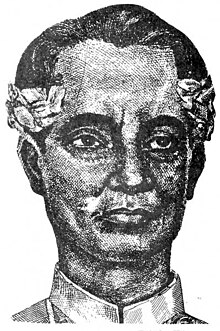Balagtasan

Balagtasan is a Filipino form of debate done in verse. Derived from the name of Francisco Balagtas, this art presents a type of literature in which thoughts or reasoning are expressed through speech.
The fist balagtasan took place in the Philippines on April 6, 1924 created by groups of writers to commemorate the birth of Francisco Balagtas.[1] They made the first balagtasan with three sets of poets presenting a scripted defense. They based the form on earlier types of debates that also used poetic elements such as karagatan, huwego de prenda and, duplo.
Balagtasan is participated by two or more protagonists who engaged in a debate on a selected subject. Each protagonist are to express their views in verse and with rhyming. Refutations shall also be done in the same manner. A judge, known as the lakandiwa if male or lakambini if female, will decide the winner of the balagtasan. The judge shall also announce the winner in verse and with rhyming. The participants are also expected to impress before a watching audience.[2][3][4] This is enlightened by the expression of poetic arguments but it can also provide entertainment through humor, extraordinary wit, and quasi-theatrical and dramatic expression.[5]
History[]
On March 28, 1924, five days before Balagtas' birthday, some writers met up at the Instituto de Mujeres, Tayuman Street, Tondo, Manila, Philippines to prepare for the celebration of Balagtas Day on April 2, 1925.[5] That building was the office of Rosa Sevilla, a well-known writer. There they created the concept of the balagtasan with some suggesting a modern duplo.
On April 6, 1924, the first balagtasan took place at the Instituto de Mujeres. The event was held at the Instituto de Mujeres (Women's Institute) as part of the celebration of Francisco Balagtas' birth anniversary. The two protagonists of the poetic debate were poets José Corazón de Jesús and Floranto Collantes.
Due to the successful public reception of De Jesus and Collantes, the organizer prepared several more balagtasans involving the two. Because of the ingenuity of the two, they prepared a balagtasan without a script on October 18, 1925 at the Olympic Stadium in Manila to test them even further.[6] Their topic during the balagtasan was "The Filipina Girl: Then and Now." De Jesus took the side of women in the past while Collantes chose women today. At the end of the balagtasan, De Jesus won and was crowned the first "Hari ng Balagtasan" (King of the Balagtasan).
After the performance of De Jesus and Collantes in 1925 until the end of World War II, the verbal joust became popular among both the masses, intellectuals, and poets coveted the title of "Hari ng Balagtasan".[6] This led to the adaptation of similar literary forms such as the bukanegan by the Ilocanos named after the father of Iloko literature, Pedro Bukaneg. Filipino poets in the Spanish language, specifically Jesus Balmori and Manuel Bernabe, also engaged in balagtasan competitions, and their poetic jousts featured and immortalized in the book with the title Balagtasan: Justa Poetica (1927), with a prologue written by Teodoro Kalaw. Balagtasan saw a significant decline after the death of de Jesus in 1932.[3][7]
References[]
- ^ Edward Hirsch -A Poet's Glossary 2014 - Page 52 "The balagtasan, a poetic contest, developed in Philippine poetry in the second quarter of the twentieth century. It is named after Francisco Balagtas (1788–1862), “the father of Tagalog poetry,” and grew out of the popular folk form of the duplo."
- ^ De Leon, Mylah (24 August 2013). "The timeless art of Balagtasan". Moonlighting. Retrieved 28 September 2015.
- ^ a b San Juan, Epifanio (1974). "Introduction". Introduction to Modern Pilipino Literature. United States: Twayne Publishers, Inc. p. 23. ISBN 0805731296.
- ^ Francia, Luis (18 October 2011). "Balagtasan on the Bowery". The Artist Abroad. Philippine Daily Inquirer. Retrieved 28 September 2015.
- ^ a b Almario, Virgilio S. (October 21, 2003). "Art and Politics in the Balagtasan".
{{cite journal}}: Cite journal requires|journal=(help) - ^ a b Montemayor, Guro. "Balagtasan". www.pamas.org. Retrieved October 23, 2021.
{{cite web}}: CS1 maint: url-status (link) - ^ Quodala, Schatzi (5 April 2013). "Did you know: Fist Balagtasan". Philippine Daily Inquirer. Retrieved 28 September 2015.
External links[]
- Philippine poetry
- Debate types
- Poetry stubs